Keeping track of software licenses, usage, and compliance has become vital for businesses of all sizes. Software Asset Management (SAM) tools play a crucial role in ensuring that organizations stay on top of their software assets and avoid overspending or non-compliance penalties. As we explore the best Software Asset Management tools available in 2024, InvGate Asset Management stands out as an efficient and comprehensive solution.
With many options on the market, choosing the right tool can be overwhelming. But don’t worry – we’ll walk you through our top picks to make your selection easier! Let's go.
Software Asset Management tools: Our top 5 selection
Navigating through various SAM tools can feel like a never-ending task. With so many solutions available, it’s essential to find one that meets your unique needs. To simplify this process, we’ve narrowed it down to five top tools that excel in different aspects of Software Asset Management.
- InvGate Asset Management.
- USU Software Asset Management.
- Google Cloud Asset Inventory.
- ServiceNow Software Asset Management.
- Zluri.
- Certero for Enterprise SAM.
What is a Software Asset Management tool?
Software Asset Management tools help organizations monitor, manage, and optimize software applications throughout their lifecycle. These tools provide insights into software usage and ensure compliance with licensing agreements, which is crucial for minimizing unnecessary costs and avoiding audits.
With the rise of digital transformation, SAM tools have evolved to support businesses in managing complex software ecosystems. Let’s dive into why understanding SAM is essential before selecting the right tool.
What is Software Asset Management?
Software Asset Management (SAM) is a set of practices aimed at optimizing and controlling software usage within an organization. By managing software licenses, organizations ensure they comply with legal requirements while minimizing unnecessary expenses. Proper SAM helps businesses allocate resources efficiently, make informed decisions, and reduce potential audit risks.
Without SAM, organizations may face financial losses from unused software, compliance fines, or over-licensing. Understanding SAM's benefits is essential as we move forward in selecting tools that help maximize software value and minimize costs.
Benefits of Software Asset Management
Achieving SAM goals brings multiple benefits that enhance operational efficiency and cost-effectiveness. Here’s a breakdown:
-
Cost reduction: SAM tools help organizations cut software expenses by identifying unused licenses and optimizing purchases.
-
Improved compliance: SAM ensures that software is used in accordance with licensing agreements, reducing the risk of non-compliance fines.
-
Enhanced visibility: With SAM, organizations gain insights into software usage, allowing for data-driven decisions.
-
Operational efficiency: Automating software tracking frees up IT resources for more strategic tasks.
-
Risk mitigation: SAM tools help manage and control potential risks associated with software audits and non-compliance.

Features of Software Asset Management tools
SAM tools come with essential features that ensure software tracking, usage compliance, and Cost Management. Here are some key functionalities to consider:
1. Software Inventory Management
Software Inventory Management tracks all software assets in an organization, offering a centralized, real-time view of all installed applications. This feature helps administrators monitor licenses and provides a robust foundation for tracking usage, facilitating decision-making for future purchases and renewals.
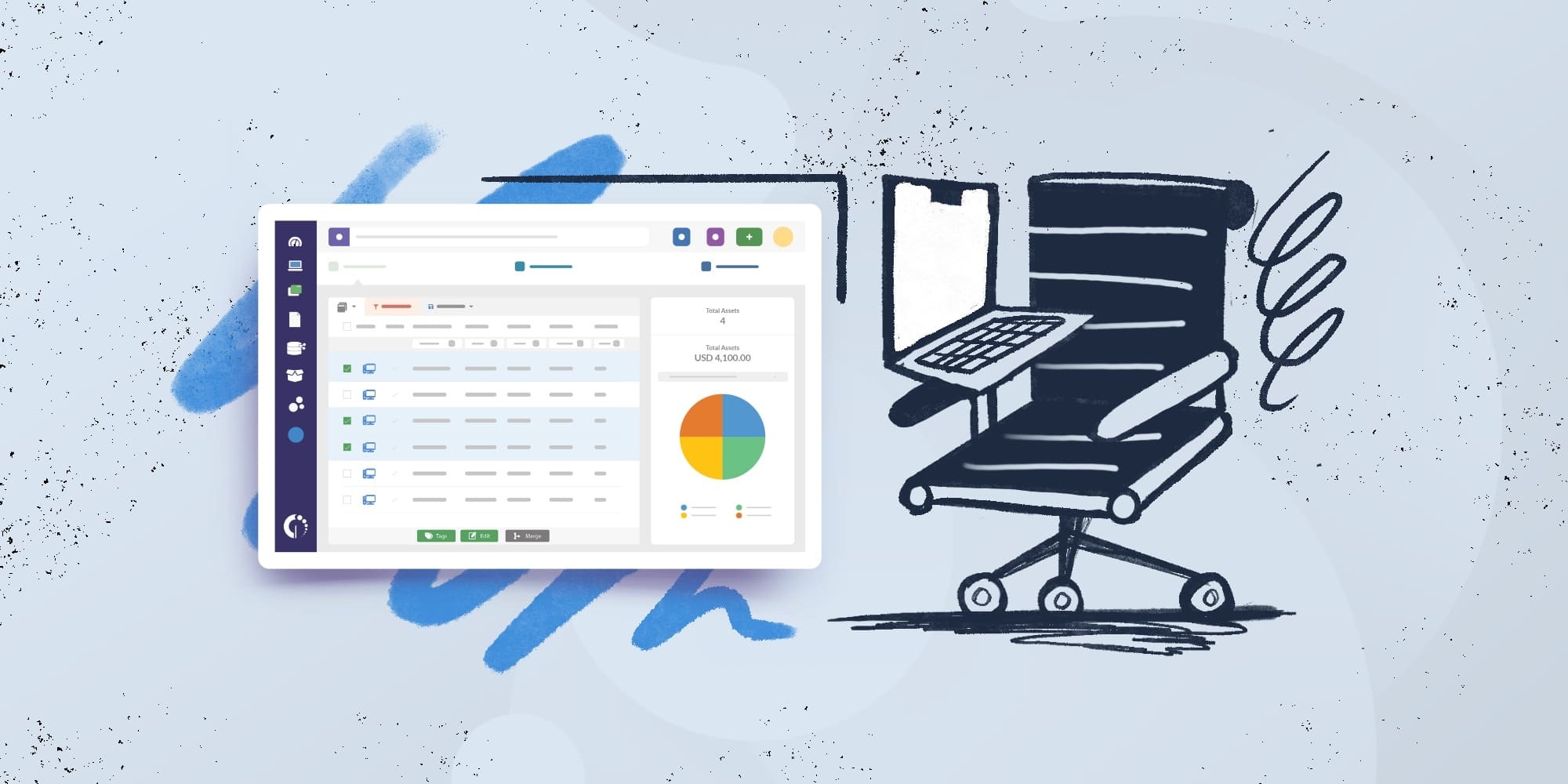
2. License Compliance Management
License Compliance Management ensures that organizations stay compliant with software licensing agreements. This feature allows organizations to monitor licenses across departments, identify underutilized software, and stay prepared for audits by tracking compliance metrics and setting alerts for renewals and licensing issues.
3. Software usage tracking
Software usage tracking provides visibility into how often and how extensively applications are used across an organization. By identifying overused or underused software, organizations can reallocate resources effectively, saving costs on unused licenses or upgrading heavily used ones.
4. Asset Management
Asset Management integrates hardware and software tracking, creating a unified view of all assets within the IT environment. This helps organizations manage both types of assets together, ensuring hardware-software compatibility and streamlining Asset Lifecycle Management.
5. Reporting and analytics
Robust reporting and analytics capabilities provide insights into software usage trends, compliance status, and potential cost savings. Through custom dashboards, SAM tools enable organizations to visualize data, make informed decisions, and measure the success of their Asset Management strategies.
Top Software Asset Management tools
Finding the right SAM tool involves comparing functionalities, interfaces, and support. Below, we delve into some top SAM solutions for 2025:
1. InvGate Asset Management

InvGate Asset Management is a great SAM solution because it provides comprehensive visibility into software assets, compliance, and usage across an organization. With its intuitive interface and robust reporting tools, InvGate enables organizations to streamline their Software Asset Management, reducing costs and ensuring full compliance with licensing requirements.
InvGate’s SAM capabilities go beyond software, integrating seamlessly with Hardware Asset Management (HAM) to create an all-in-one solution. This integration empowers businesses to manage their entire IT landscape from a single platform, giving them better control over software and hardware assets alike. These are some of its key features:
1. Centralized asset inventory with real-time tracking
InvGate Asset Management offers a centralized inventory that consolidates all software assets, providing a real-time view of the software installed across your organization. This feature simplifies asset tracking, helping teams locate software assets and monitor them for compliance and optimization.
2. Automated compliance alerts and license tracking
InvGate simplifies license compliance with automated alerts that notify teams of upcoming expirations, potential non-compliance issues, and renewal dates. By staying proactive on license tracking, organizations can reduce audit risks and ensure they’re always in line with licensing agreements.
3. Advanced usage analytics and reporting
With detailed usage analytics, InvGate Asset Management helps organizations understand how software is utilized across different departments. These insights allow teams to identify underused licenses, optimize software spend, and make informed decisions about license renewals or reallocations.
4. Integration with Hardware Asset Management (HAM)
InvGate Asset Management seamlessly integrates with Hardware Asset Management to deliver a unified view of both software and hardware assets. This integration enables businesses to manage and optimize the entire IT asset lifecycle from a single platform, improving operational efficiency.
5. Software usage tracking and metering
InvGate’s software usage tracking provides detailed data on how applications are used, enabling organizations to make data-driven decisions. With metering capabilities, InvGate ensures that licenses align with actual usage patterns, reducing costs associated with unused or underutilized software.
6. Compliance and audit-ready reporting
InvGate Asset Management simplifies audit preparation with reports that demonstrate compliance across all software assets. With customizable reports, businesses can ensure they’re always ready for vendor audits and have a clear record of compliance at all times.
7. Customizable dashboards and workflows
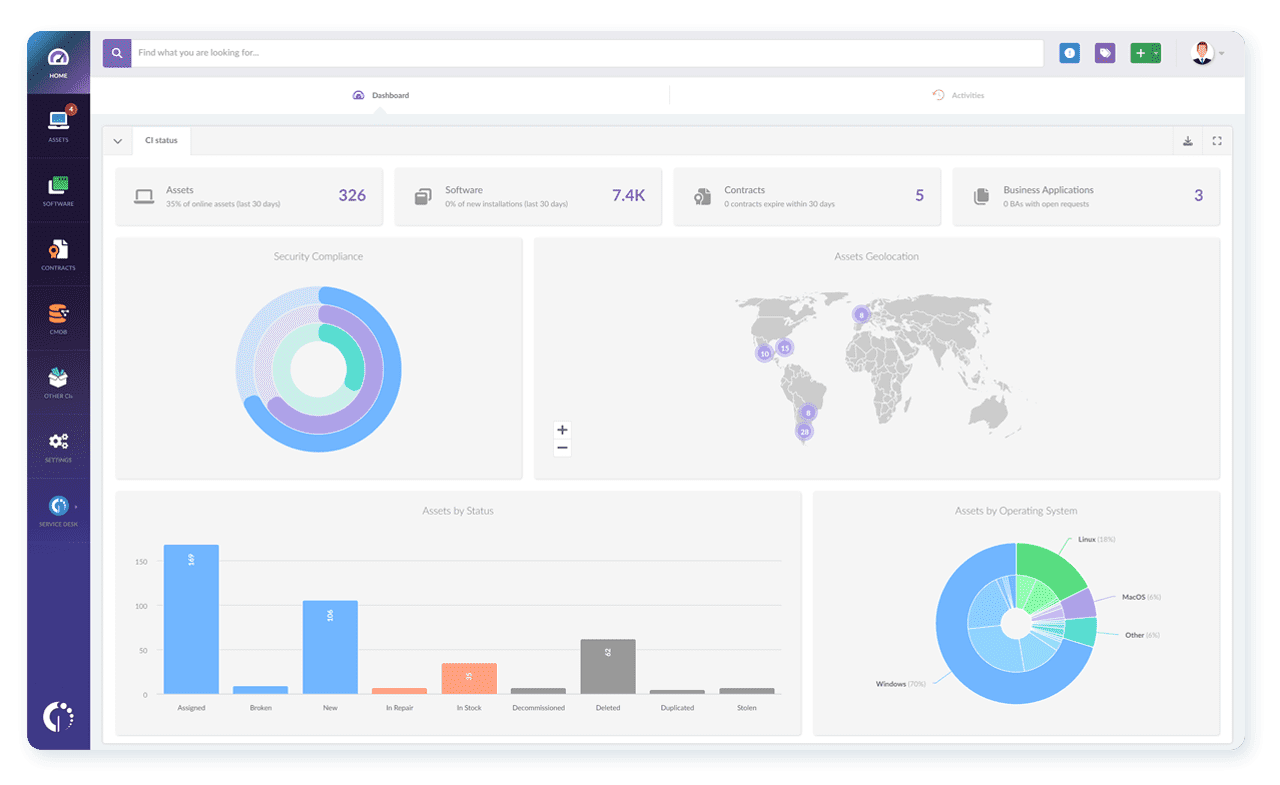
InvGate allows users to tailor dashboards and workflows to fit specific business needs. This customization capability enables teams to create workflows for routine SAM tasks, making software asset management more efficient and adaptable to changing business requirements.
8. Integration with IT Service Management (ITSM)
InvGate Asset Management integrates with IT Service Management platforms to offer a holistic view of IT assets and services. By connecting SAM with service management, organizations gain additional insights that improve both asset and service delivery management, enhancing IT operations as a whole.
9. Cost optimization tools
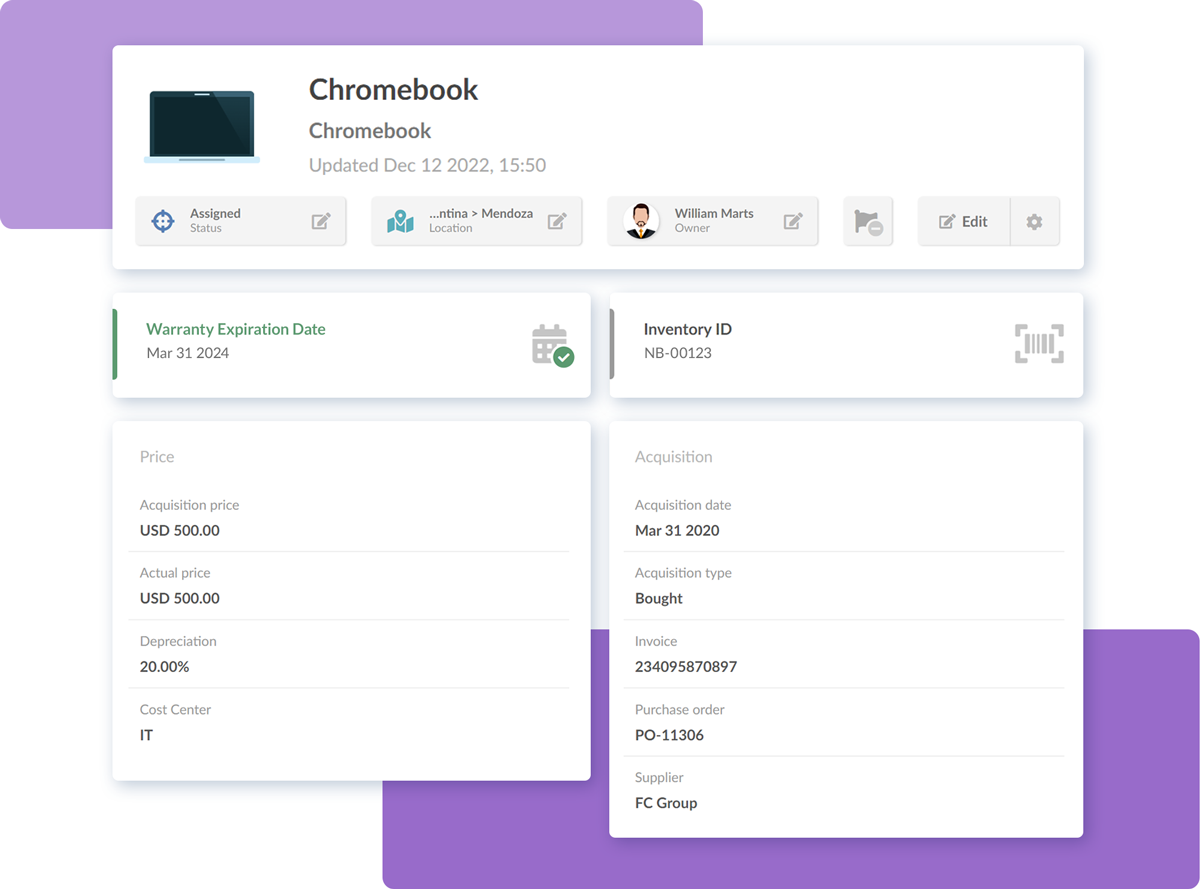
InvGate provides cost optimization features that highlight opportunities for reducing software spending. By identifying unused software, overlapping licenses, and optimizing allocation, businesses can ensure they’re getting the most value from their software investments.
2. USU Software Asset Management
USU Software Asset Management provides a comprehensive solution that combines tools and services into a single platform. This solution is built for enterprises looking to streamline their SAM efforts, offering capabilities such as license optimization and audit readiness.
The platform supports a variety of software vendors and licensing models, providing extensive flexibility for businesses with diverse software portfolios.
Key features of USU Software Asset Management
- Advanced license optimization.
- Multi-vendor software support.
- Detailed compliance and audit reports.
- Cost reduction insights and management.
- Integration capabilities with ERP systems.
3. Google Cloud Asset Inventory
Google Cloud Asset Inventory is a cloud-based SAM tool designed for businesses that rely on Google Cloud services. This tool provides visibility into Google Cloud and Anthos assets, giving organizations a centralized view of their digital inventory.
With Google’s metadata capabilities, organizations can track their cloud-based assets, manage compliance, and optimize cloud usage efficiently.
Key features of Google Cloud Asset Inventory
- Cloud-native asset tracking and management.
- Real-time visibility into Google Cloud and Anthos assets.
- Automated compliance alerts.
- Integration with Google’s cloud security features.
- Metadata inventory capabilities.
ServiceNow Software Asset Management
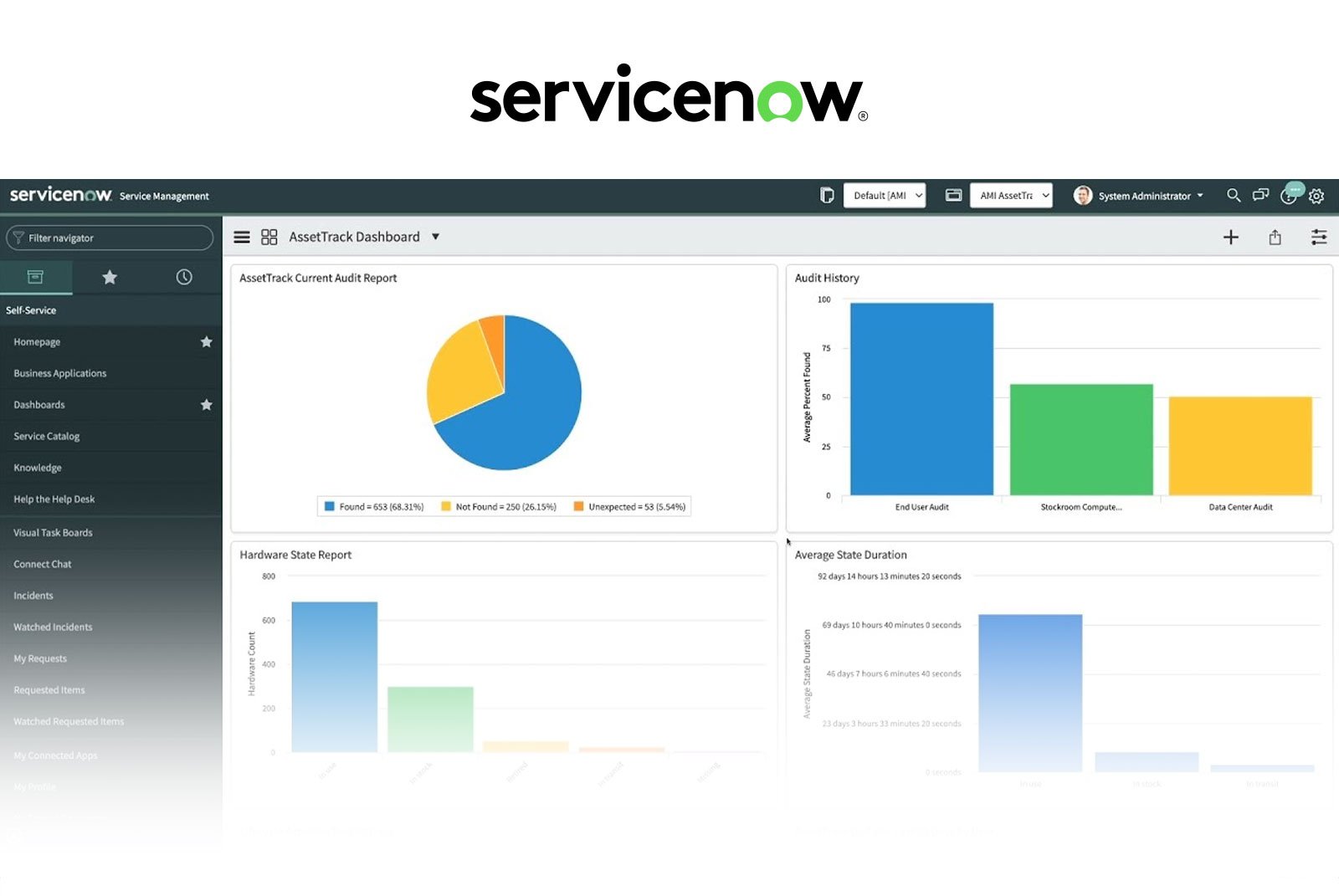 ServiceNow’s SAM solution allows businesses to manage and track software licenses throughout their lifecycle. Built on ServiceNow’s platform, this tool integrates with other ITSM processes, providing a unified approach to managing software assets.
ServiceNow’s SAM solution allows businesses to manage and track software licenses throughout their lifecycle. Built on ServiceNow’s platform, this tool integrates with other ITSM processes, providing a unified approach to managing software assets.
ServiceNow’s SAM solution is especially useful for businesses looking to manage software compliance and streamline procurement.
Key features of ServiceNow Software Asset Management
- Full lifecycle license management.
- Real-time usage and compliance monitoring.
- Seamless integration with ITSM processes.
- Cost-saving analytics and reporting tools.
- Customizable workflows.
Zluri
Zluri is a SaaS-based SAM platform that offers a 360-degree view of all applications, users, and associated costs. It focuses on cloud applications, providing insights into user behavior and spending.
Zluri enables businesses to control SaaS expenditure and optimize license usage while ensuring compliance with SaaS licensing requirements.
Key features of Zluri
- Comprehensive SaaS application tracking.
- User behavior analysis and spending insights.
- Automated compliance management for SaaS licenses.
- Cost optimization for cloud applications.
- Integration with popular SaaS tools.
Certero for Enterprise SAM
Certero for Enterprise SAM supports enterprise-scale environments with visibility across Windows, Mac, Linux, and Unix systems.
Designed for large organizations, Certero’s SAM solution provides detailed insights into software usage, cost management, and compliance, making it ideal for managing a wide array of assets.
Key features of Certero for Enterprise SAM
- Cross-platform Software Management.
- Detailed usage tracking and compliance reporting.
- Multi-vendor license optimization.
- Advanced analytics for Cost Management.
- Support for large-scale enterprise environments.
Evaluating Software Asset Management vendors
When choosing a SAM vendor, it’s crucial to identify your organization’s needs and compare them with the vendor’s offerings. Start by considering specific requirements like license compliance, software usage tracking, and reporting needs. Assess whether the vendor has a strong track record in the industry and can offer reliable support.
A comprehensive evaluation also includes examining the vendor’s approach to real-time visibility and scalability. As your organization grows, your SAM needs may evolve, so choose a vendor that can scale alongside you. Lastly, consider the pricing model; some vendors offer flexible plans that align with the size and software demands of your business, ensuring cost-effectiveness over time.

Establishing a Software Asset Management program
Creating an effective SAM program starts with clear goals and objectives. Define specific outcomes like cost savings, improved compliance, and streamlined asset tracking. Then, identify all software assets, including licenses and usage patterns, and document them thoroughly to avoid redundancy.
Developing a SAM policy that outlines roles, responsibilities, and processes ensures consistency across departments. Assign a dedicated SAM team to oversee and manage the program, regularly updating policies as software usage and organizational needs change. Establishing this foundation paves the way for an organized, efficient approach to managing software assets across the organization.
Best practices for Software Asset Management
Implementing a successful SAM program requires adopting best practices that optimize software usage, control costs, and maintain compliance.
Effective SAM practices not only help organizations manage software licenses but also provide a comprehensive view of all software assets, ensuring smooth operations across various business units. Here are key strategies for achieving an efficient and compliant SAM program.
1. Regularly track and analyze software usage
To optimize software licenses, regularly track and analyze software usage across the organization. SAM tools, like those provided by Google Cloud Asset Inventory or AWS License Manager, help gather actionable insights into software metering, allowing companies to identify which software applications are essential and which licenses remain unused.
Understanding software usage enables organizations to make data-driven decisions about reallocating or terminating licenses, resulting in significant cost savings.
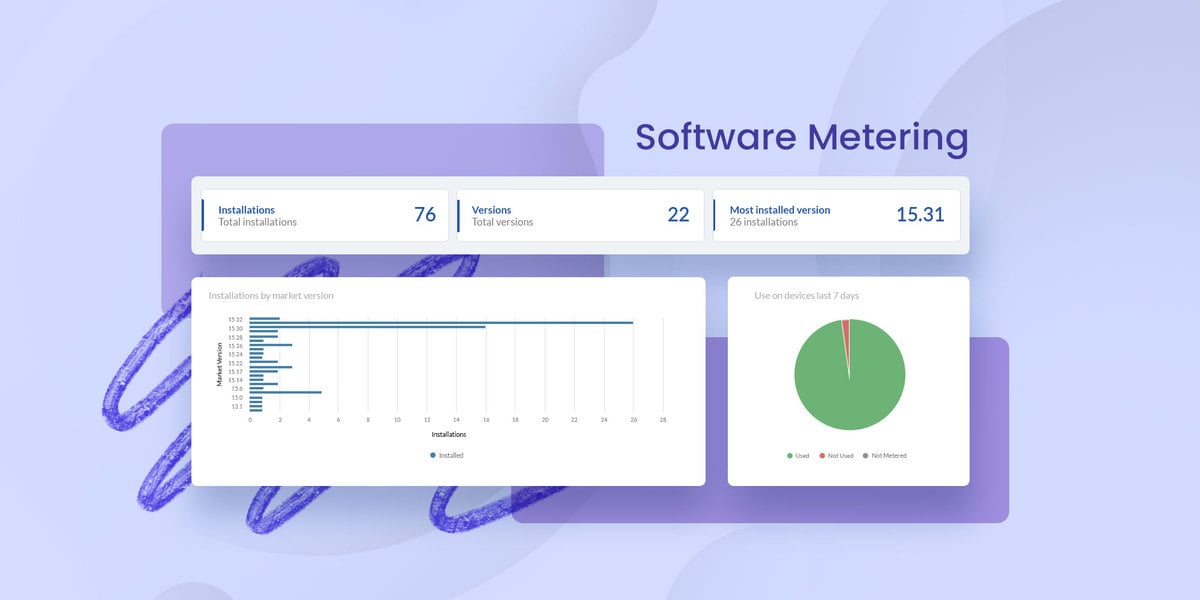
2. Implement a Software Asset Management policy
An effective SAM policy forms the foundation of any successful SAM program. By outlining specific processes for license compliance, usage limits, and Asset Management, companies ensure consistent practices across all departments.
A well-defined SAM policy also includes guidelines for handling software assets throughout their lifecycle, from initial procurement to end-of-life, which streamlines processes and reduces risks associated with vendor audits.
3. Use Software Asset Managers to control software assets
Designated software asset managers play a pivotal role in controlling software assets and ensuring compliance with licensing agreements. These managers monitor license usage, manage software licenses, and optimize spending across various software environments.
By keeping an eye on both on-premises environments and SaaS applications, software asset managers can offer complete visibility into software spending and usage. This oversight minimizes risks, such as unexpected audit penalties, and maximizes cost savings.
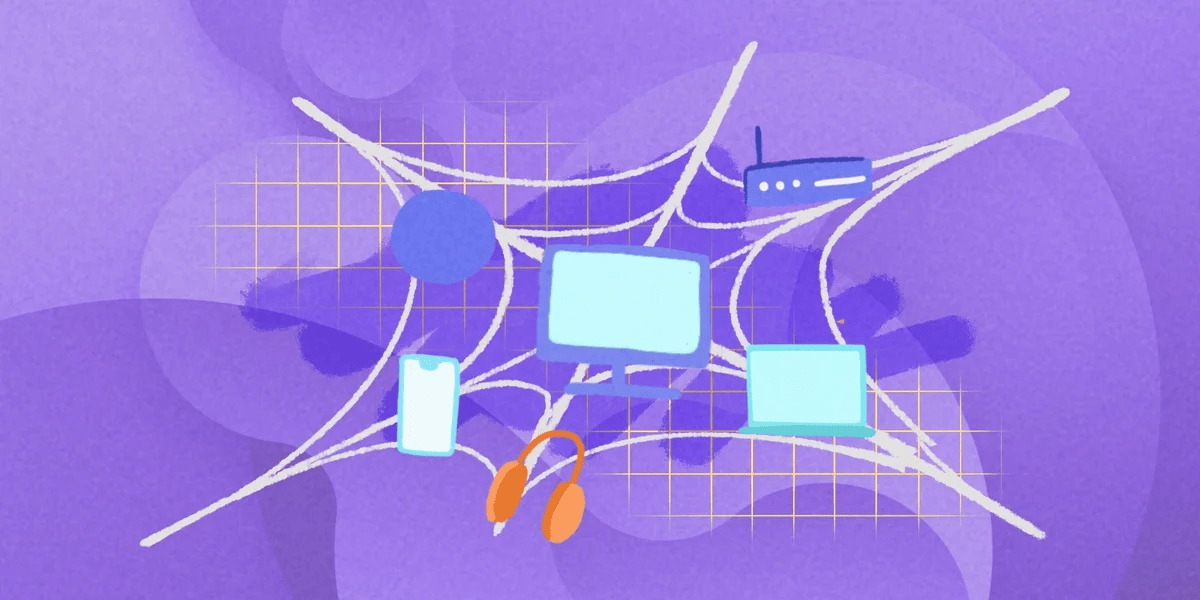
4. Provide training and support to end-users
Training is an essential business practice that ensures employees understand Software Asset Management policies, proper software usage, and compliance requirements. Educating end-users on how to manage software effectively, including usage limits and license agreements, minimizes the chances of accidental non-compliance.
Regular training sessions, especially when onboarding new employees, empower teams to make informed decisions about software usage, resulting in better overall compliance and optimized spend. There are many employee training programs and choosing the right one is key for continuous improvement.
5. Continuously monitor and evaluate the SAM program
Regularly evaluating the SAM program keeps it aligned with evolving organizational needs and software usage patterns. A SAM tool provides compliance tracking and auditing features, helping businesses adapt to changes in software inventory or digital assets.
Continuous monitoring ensures organizations can respond quickly to any compliance risks and maintain an effective license position, resulting in reduced audit risks and improved control over software costs.
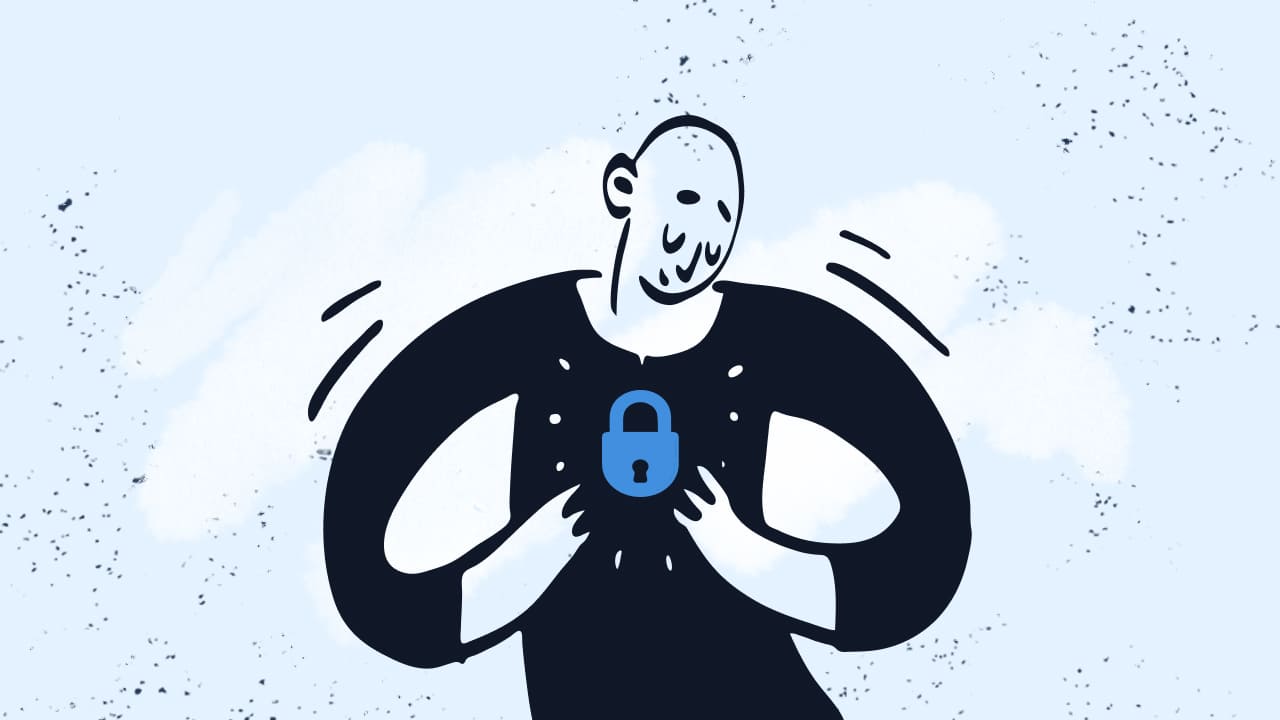
6. Optimize software licenses to manage costs
License optimization is a key benefit of SAM practices, allowing organizations to manage costs by analyzing software usage patterns and identifying unused or underused software licenses.
By optimizing software licenses, businesses can reduce software spending and avoid unnecessary renewals or purchases. Additionally, SAM tools often include features to manage contract renewals and offer cost savings through license reallocation or downgrades, contributing to overall business outcomes and reduced software costs.
7. Leverage a centralized location for all software assets
Managing all the assets in a centralized location helps organizations streamline Asset Management across various departments and business units.
This centralized approach provides a comprehensive view of digital assets, software environments, and hardware assets, allowing SAM managers to oversee software licenses effectively. For enterprises with on-premises environments and SaaS applications, a centralized SAM tool consolidates software inventory management, ensuring license compliance across the organization.
8. Ensure license compliance and reduce audit risks
Ensuring license compliance is essential to avoid potential vendor audits and associated penalties. SAM tools provide compliance tracking and audit preparation tools that keep organizations audit-ready.
Staying ahead of compliance requirements protects businesses from financial risks, improves vendor relationships, and ensures an effective license position, which is critical for meeting legal and contractual obligations.
9. Regularly review and update licensing agreements
As business requirements evolve, so do software needs and license agreements. Regularly reviewing licensing agreements and renewing contracts allows organizations to maintain control over software costs and compliance status.
SAM tools often provide reminders and alerts for contract renewals, ensuring businesses make informed decisions based on current usage and requirements. By maintaining updated licensing agreements, companies avoid unexpected costs and maximize the value of their software investments.
10. Implement SaaS Management for comprehensive visibility
With the rise of SaaS applications, organizations must manage cloud-based assets alongside traditional software. SaaS management tools help companies gain comprehensive visibility into cloud applications and spending, which is essential for optimizing SaaS costs.
A proactive approach to SaaS management identifies unused or underutilized software licenses, allowing organizations to reallocate resources and reduce costs while maintaining license compliance.
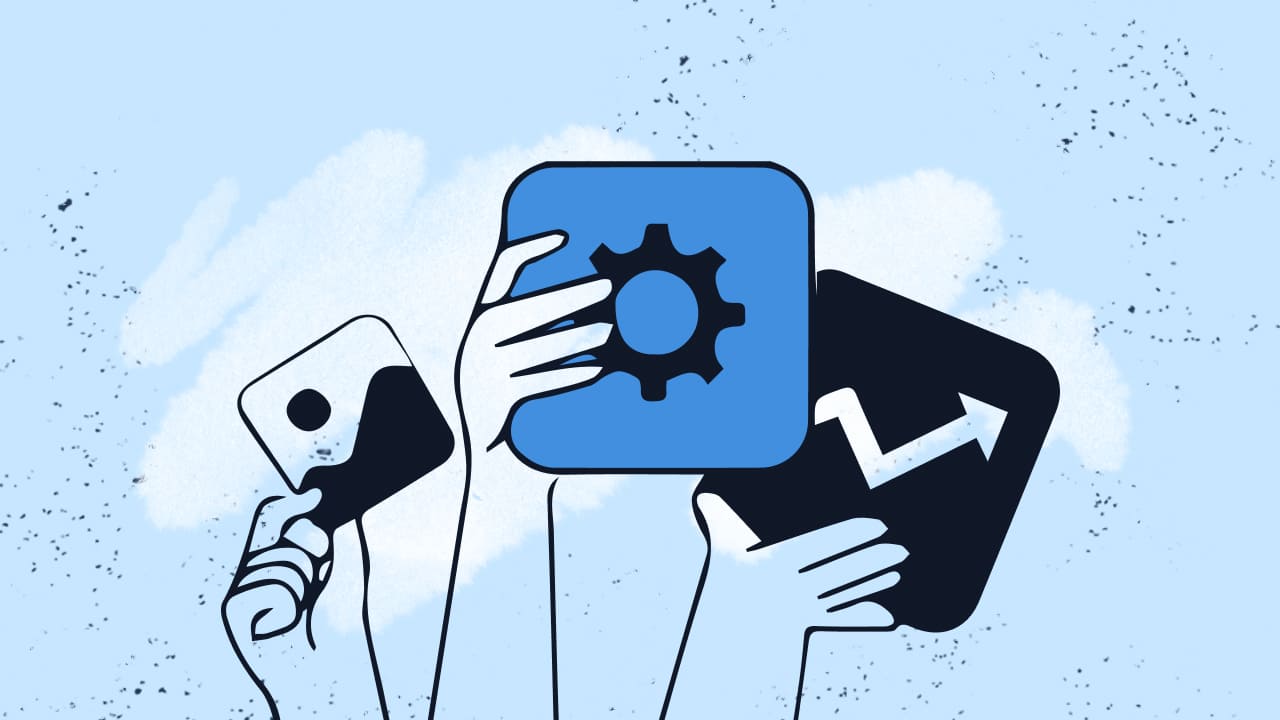
11. Develop custom workflows for streamlined processes
SAM programs benefit from custom workflows that standardize processes, improve efficiency, and ensure consistency across business units. Custom workflows help software asset managers handle complex SAM tasks, such as license compliance, software inventory updates, and vendor audits, with greater precision.
By establishing workflows tailored to the organization’s unique requirements, SAM teams can streamline asset lifecycles, monitor usage patterns, and optimize spend more effectively.
12. Maintain a comprehensive view of software and hardware assets
A robust SAM program maintains a comprehensive view of both software and hardware assets, creating a unified inventory of all the assets.
Integrating hardware assets with Software Asset Management practices ensures that businesses understand the full scope of their IT environment, enabling better decisions regarding resource allocation, Software Lifecycle Management, and compliance tracking.
13. Prepare for vendor audits and compliance reviews
Vendor audits can occur unexpectedly, making it crucial for organizations to maintain up-to-date compliance records. Preparing for audits involves conducting regular internal compliance reviews, ensuring that all software installations comply with licensing agreements, and addressing any gaps proactively.
SAM tools simplify audit preparation by providing detailed reports on software usage, license compliance, and Cost Management, reducing the risk of penalties and ensuring peace of mind.

Final thoughts
Software Asset Management is crucial in today’s technology-driven environment, helping organizations maximize software investments, reduce costs, and avoid compliance risks. By implementing a solid SAM program, organizations can streamline their software usage and ensure alignment with licensing agreements.
For a robust SAM experience, using the right tool – like InvGate Asset Management – can make all the difference. This tool provides end-to-end asset visibility, compliance monitoring, and cost optimization, making Software Asset Management easier and more effective. If you'd like to try it yourself, you can always request a free 30-day trial.
Frequently Asked Questions (FAQs)
1. What is Software Asset Management (SAM)?
SAM refers to a set of processes and tools that help organizations manage, track, and optimize their software assets. It ensures compliance, minimizes software costs, and provides visibility into software usage.
2. Why is SAM important for businesses?
SAM helps organizations reduce costs, ensure compliance with licensing agreements, optimize software usage, and prepare for potential audits.
3. What are the key features to look for in a SAM tool?
Important features include software inventory management, license compliance tracking, software usage analytics, Asset Management, and robust reporting.
4. How does InvGate Asset Management support SAM needs?
InvGate Asset Management offers a centralized platform for tracking licenses, ensuring compliance, and providing detailed analytics on software usage, making it an efficient SAM tool.
5. How often should we review our SAM program?
Regular reviews, ideally on a quarterly basis, help organizations stay updated with software usage and adapt to new compliance or licensing requirements.















